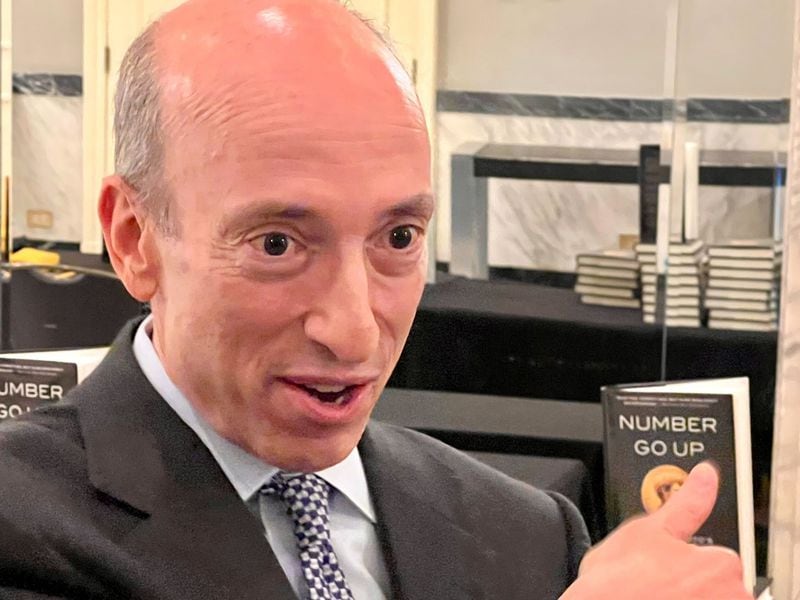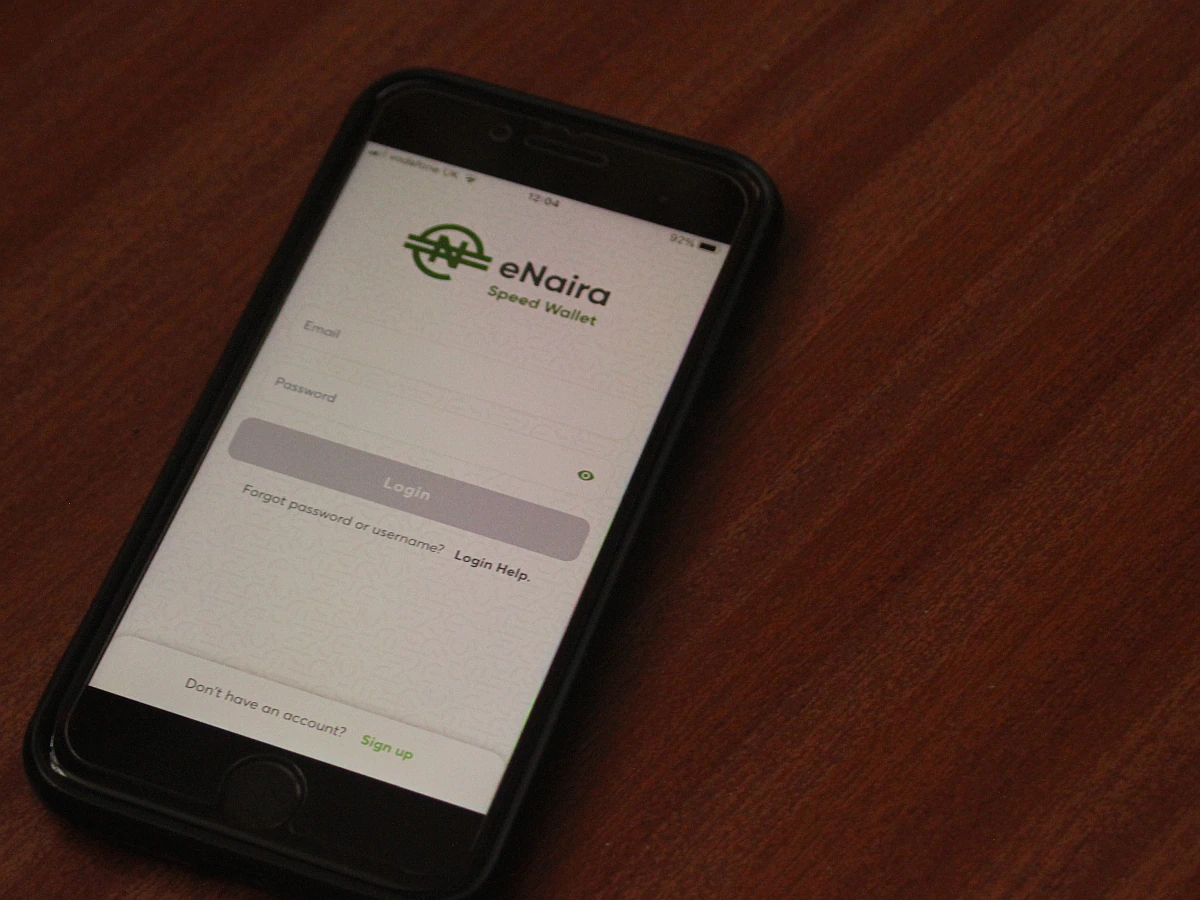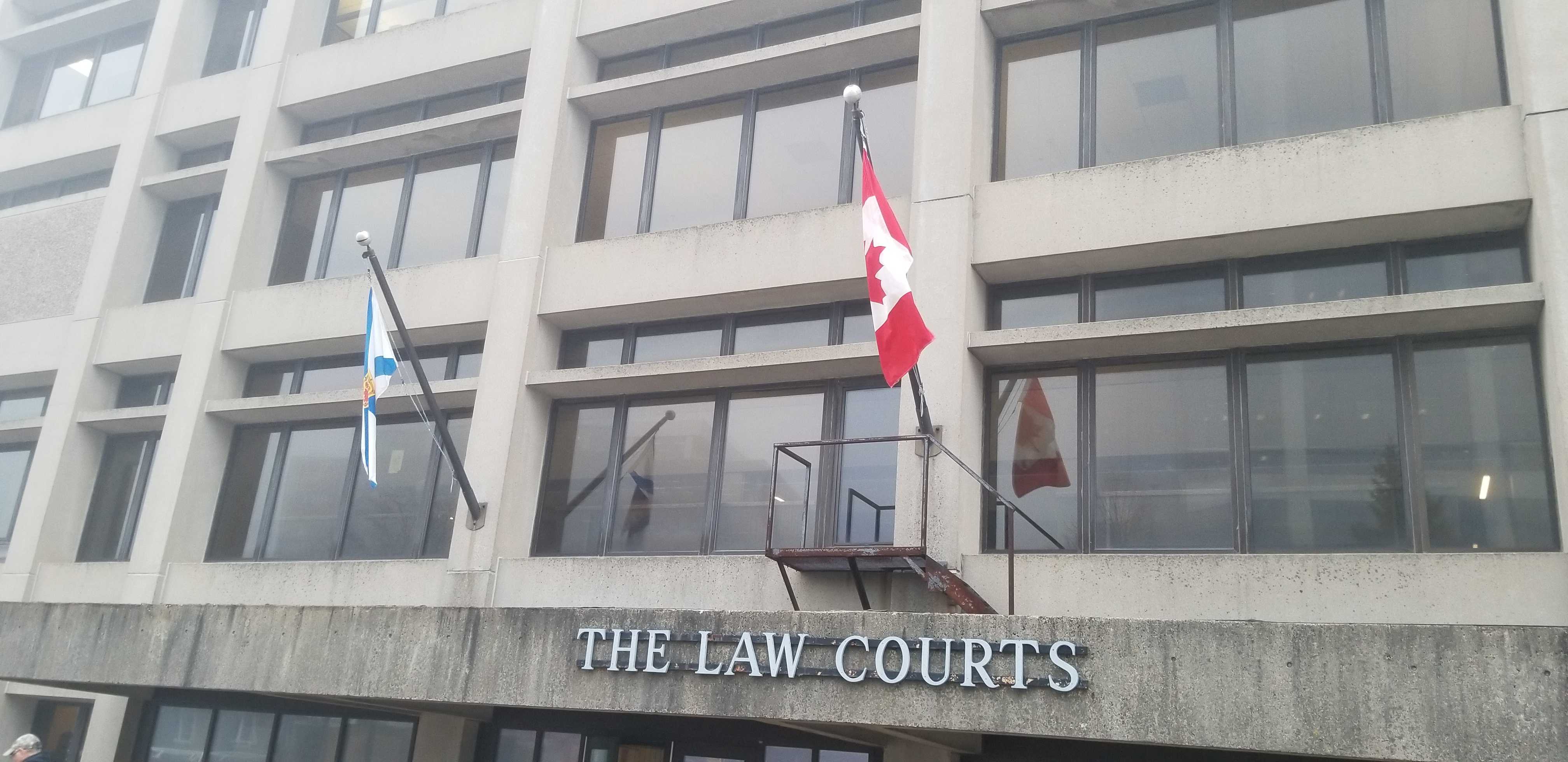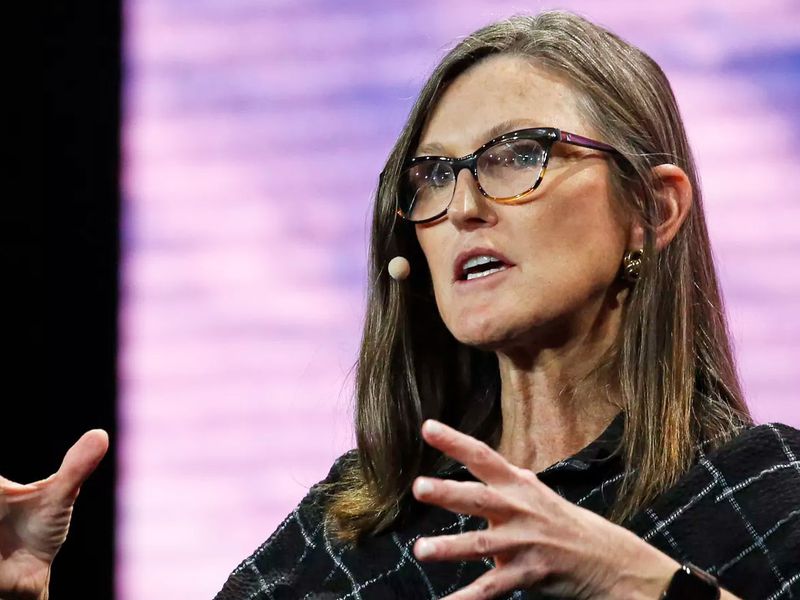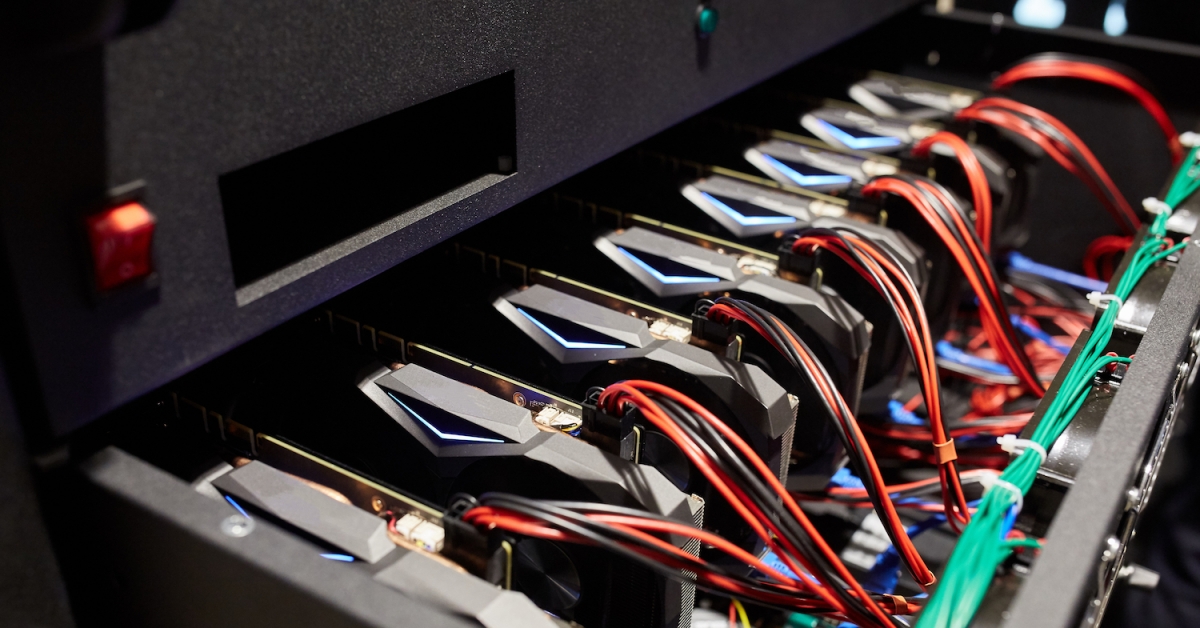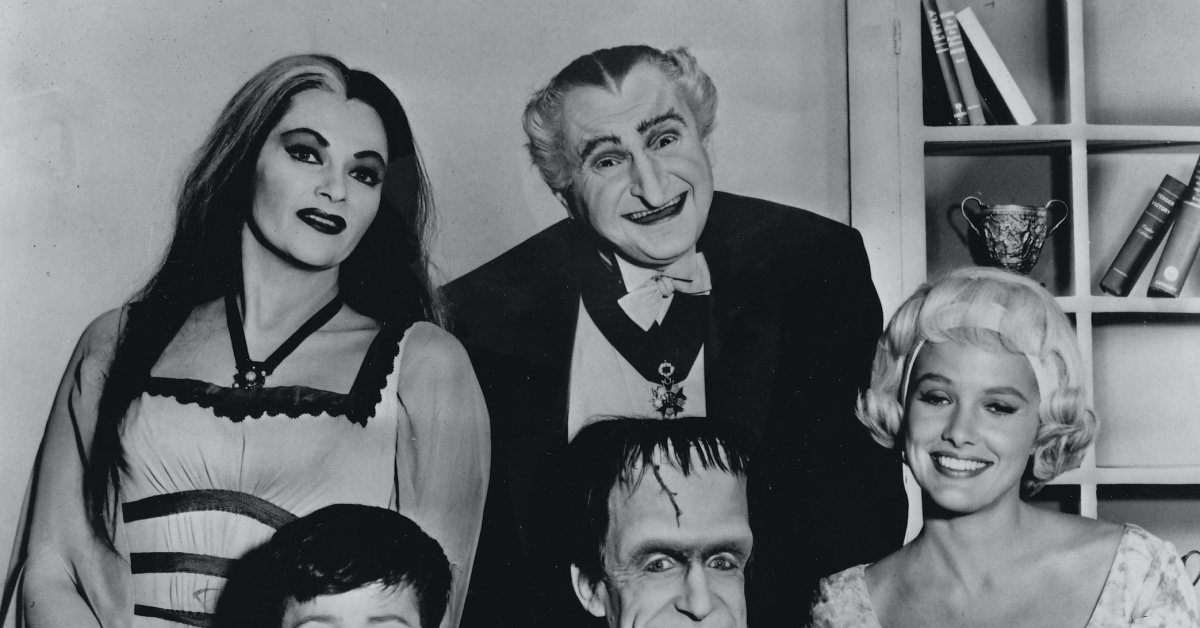Defending Goldman Sachs’ Latest Crypto Criticism
The crypto ecosystem is quick to condemn public crypto skepticism from under-informed traditional finance experts who should, we reasonably conclude, know better. We’ve seen this happen over the past few days with the reaction to comments given by Sharmin Mossavar-Rahmani, chief investment officer of Goldman Sachs Asset & Wealth Management, in a recent Wall Street Journal interview.
I’m not going to add to the criticism here, satisfying as that may be. Instead, I’m going to try to defend her statements. To be clear, I deeply disagree with most of them – but I also believe that better understanding opposing views makes us stronger advocates for crypto’s potential. Plus, it brings down the irritation level, which is good for overall well-being. And it’s a fun mental exercise.
Noelle Acheson is the former head of research at CoinDesk and Genesis Trading, and host of the CoinDesk Markets Daily podcast. This article is excerpted from her Crypto Is Macro Now newsletter, which focuses on the overlap between the shifting crypto and macro landscapes. These opinions are hers, and nothing she writes should be taken as investment advice.
Let’s start with the bigger picture and some background.
First, Mossavar-Rahmani has an impressive investment pedigree – including 31 years at Goldman Sachs – that can’t have been easy, and deserves respect.
Second, she does not represent all of Goldman Sachs, which has about 40,000 employees around the world. She is the head of the Asset & Wealth Management Division, which is distinct from Sales & Trading and Investment Banking, both of which are involved in the crypto ecosystem.
Third, some crypto media outlets are shrieking that Goldman Sachs is now “under pressure” or “facing heat” because of Ms. Mossavar-Rahmani’s comments. I very much doubt that Goldman Sachs cares about crypto outrage, and its wealth management clients can find crypto exposure elsewhere, if they want it.
Yet, since her voice does carry weight among investment managers, especially those looking for an excuse to not bother learning about crypto assets, her statements in a Wall Street Journal interview deserve some discussion.
1) “We do not think it is an investment asset class”
As I stressed above, by “we” she does not mean Goldman Sachs, just the Asset & Management Division.
An easy reaction here is to scoff at her limited understanding of digital assets, because obviously they are an “investment asset class” in that they trade on active markets, and people invest in them. But it turns out that the official definition of the term can vary. ChatGPT’s definition coincides with many others I looked up:
“A group of financial instruments that have similar financial characteristics, are subject to the same laws and regulations, and are typically traded in the same financial markets.”
It could be that Ms. Mossavar-Rahmani was referring to the lack of regulatory standards around crypto assets, at least in the U.S. If that second prong is indeed part of Goldman Sachs’ definition, then crypto assets do not fit. For now, anyway.
Also, “similar financial characteristics” is a bit of a stretch. Stablecoins are very different from BTC, which, in turn, is very different from AVAX, BONK and a long list of others.
We should bear in mind that she could be speaking about the category characteristics and not about whether or not crypto is investable.
2) “If you cannot assign a value, then how can you be bullish or bearish?”
This one is easy to take strong exception to, because we all know that you don’t have to have specific values in mind to believe something will go up or down. We also all know that you cannot accurately value crypto assets, for too many reasons to go into here. But there is no shortage of bulls and bears. So, obviously and provably false, right?
Hmm. For now, let’s try and put ourselves in Mossavar-Rahmani’s shoes. She runs an investment advisor division, one that is subject to considerable scrutiny and bureaucracy. She didn’t survive over 31 years at a particularly cutthroat organization by taking hard-to-explain risks with other people’s money. Old-school investment advisors need to be able to justify decisions to their clients, they need to “show their work” in case an investment goes badly. If her team can’t assign a model-based value to BTC, they can’t make buy or sell recommendations.
Most of us don’t have Goldman Sachs-level constraints. For me, “up” is good enough, and I have a ballpark number at which I might take some profits, based on “feelz.” Other investment advisors I’ve spoken to have come up with target levels, but they’re not based on any validated method.
I will allow myself the observation that Goldman Sachs has many very smart investment analysts who surely can come up with a justifiable model. Other big-name firms have done so, and even if there is little agreement, what matters is the reasoning. Leaving that task aside, I think we have a right to expect more from a firm that has styled itself as a pillar of Wall Street. That there is no “official” model seems like lazy thinking.
But, Mossavar-Rahmani’s job is to play it safe. In that context, her comment is not out of line.
3) “[Crypto] creates absolutely no value in any shape or form”
Okay, this one is really hard to defend. Crypto assets offer a wide range of services and use cases, which have value. Even if we narrow the discussion to BTC, it clearly has value for those struggling with currency depreciation or limited financial access.
But it turns out that “value” is a very misunderstood word, even among investment professionals. Most of us assume that the concept has to do with utility, appreciation, satisfaction, belonging, and a host of other touchy-feely benefits. Art has “value,” so do flowers and friendships.
But, maybe, Mossavar-Rahmani was referring to the “assigned value” we looked at in the previous section. Maybe she meant that if there is no established model spitting out a number, there is no value?
Nope, I give up. This one is indefensible and demonstrates a lack of understanding which I can only attribute to laziness since no-one is doubting her intelligence – “absolutely” no value?? “In any shape or form”? Sigh. I tried.
4) “The main decisions end up being driven by a few controlling people”
In this one, actually, she’s kinda largely right. I would definitely suggest adding a qualifier – “some of the main decisions end up being,” or “the main decisions on some networks can end up being.” But, on the whole, I agree that “decentralization” is an often misused word.
Then again, “decentralization” is not a binary condition. There are varying degrees. And many networks are gradually working towards greater decentralization, as they promised.
Now we come to what is possibly the most revealing quote from the interview.
5) “At least you can hold onto physical gold and store it; you can’t do that with crypto”
Goldman Sachs has a long history of not recommending gold, and one theory is that it is because the investment banking division can’t make money issuing gold, whereas they do make a lot of money helping firms issue stocks and bonds. I’m not sure I buy that, but it is extraordinary to see a large investment manager ignore such a significant asset.
Perhaps it’s because gold also does not spin off any concrete “value”? Gold doesn’t have any cash flow or dividends. And, if it doesn’t have any concrete value, how can advisors be bearish or bullish, right? And does gold actually “create” value, does it make anything, does it spin off a yield? No.
I think this statement reveals much about the others. It highlights Mossavar-Rahmani’s definition of “value”, as something that needs to be created. It could be that, for her, value requires a concrete output.
It also highlights her limited understanding of how crypto assets work. Many do have concrete output. And pretty much all are possible to hold and store.
I’m tempted to point out this comment also suggests a limited view on gold investment, as few institutional or high-net-worth gold investors actually hold their own bars.
But, stepping back, the point of this exercise was to show that not all crypto critics are wrong about everything, and it’s useful to understand exactly where the barriers to acceptance stand. It’s also useful to acknowledge that conflicting views make a market, and that they don’t actually matter much in the longer term.
Even more important, it’s satisfying to think of all the people we personally know who also rejected crypto concepts at first. Smart, educated people steeped in financial lore, who eventually decided to put in the work to better understand what we see – and they all eventually changed their mind.
Maybe Mossavar-Rahmani will change her mind one day, too. Or maybe not. It doesn’t matter. If our once-skeptical friends can approach our viewpoint with an open mind, then we should try to approach our critics with the same. At the very least, it will help us better understand just where we need to focus our explaining efforts.
Edited by Benjamin Schiller.


